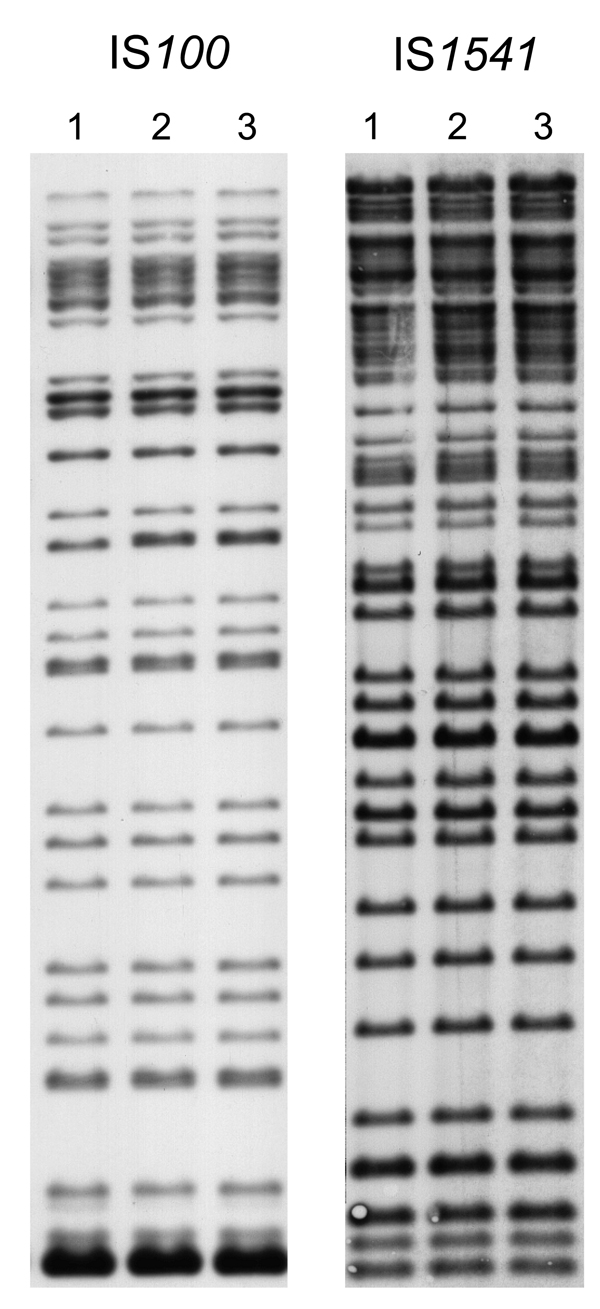Volume 19, Number 2—February 2013
Research
Plague Outbreak in Libya, 2009, Unrelated to Plague in Algeria
Figure 3

Figure 3. . Insertion sequence–restriction fragment length polymorphism profiles of 3 Yersinia pestis strains obtained during plague outbreak in Libya, 2009. Genomic DNA of strains IP1973 (lane 1), IP1974 (lane 2), and IP1975 (lane 3) were hybridized with an IS100 (after EcoRI digestion) or an IS1541 probe (after HindIII digestion).
Page created: January 22, 2013
Page updated: January 22, 2013
Page reviewed: January 22, 2013
The conclusions, findings, and opinions expressed by authors contributing to this journal do not necessarily reflect the official position of the U.S. Department of Health and Human Services, the Public Health Service, the Centers for Disease Control and Prevention, or the authors' affiliated institutions. Use of trade names is for identification only and does not imply endorsement by any of the groups named above.